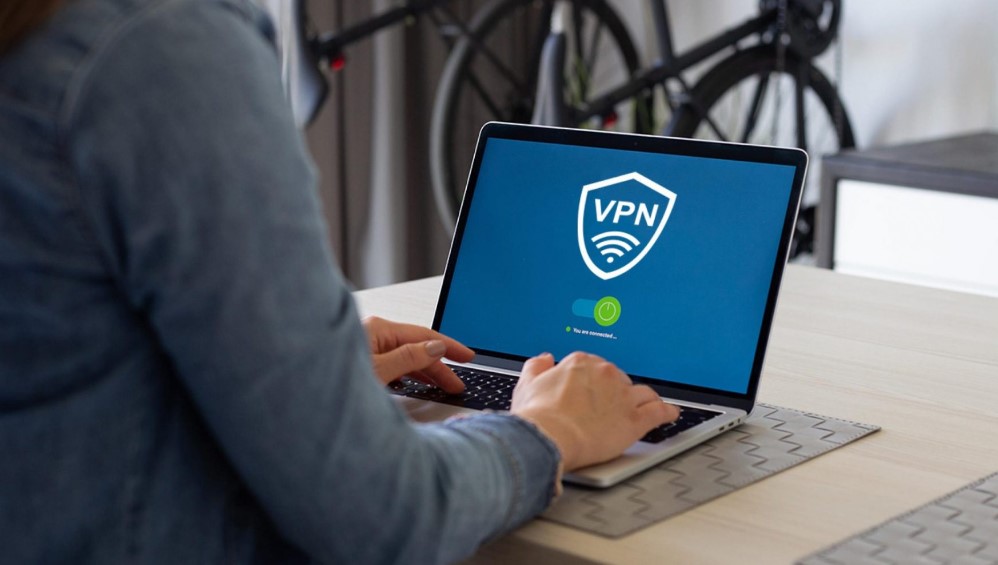School Chromebooks are powerful tools for education, but sometimes, their strict browsing policies can hinder access to legitimate websites. Fortunately, there are methods to unblock websites on your school-issued Chromebook without violating any rules or compromising security.
These schools impose restrictions and block websites on the student’s internet usage. Some of the imposed restrictions are due to legal requirements, while other restrictions are set to enhance security and boost student productivity on the school network or help manage WiFi bandwidth.

We do not recommend students violate the policy of their schools, but it is common for school content filters to block reliable research websites or other useful resources accidentally. Therefore, it is important to understand how to unblock websites on school Chromebook. In this guide, we’ll walk you through the steps to safely and responsibly unblock websites on your Chromebook.
How to unblock websites on school Chromebook
The procedure that you use to unblock websites on a school Chromebook ultimately depends on the device that you are using. In this case, there are three major scenarios:
- Using a school Chromebook
- Using a personal device and school WiFi
- Using a school tablet or computer, for example, in a classroom or the library
5 Best Ways to Unblock Websites on School Chromebook
There are many methods to unblock or bypass restrictions on websites. Here we look at the five best methods:
Use a VPN
Using the VPN offers the most effective and safest approach to unblocking websites at school. It might be hard to access a VPN when using a school computer, but if you can use a VPN, then it is the best way to bypass the restrictions. In this case, you can use premium VPNs like Express VPN or safe, reliable, and free VPNs like Proton Free.
In essence, a VPN functions by establishing a secure passage for your online data to travel through. It achieves this by encrypting your connection and directing it through a distant VPN server. From there, it exits the tunnel and proceeds to the desired website you intend to access.

The majority of school website restrictions are based on either the website’s URL or its IP address. When employing a VPN, these particulars are concealed within the VPN tunnel. This is why it proves effective in circumventing content limitations within a school environment.
The local network, such as the school’s WiFi, only perceives the IP address of the VPN server you’re linked to. Consequently, it lacks the capacity to impose any of its content restrictions.
If your objective is to unblock websites on a personal device while connected to the school’s WiFi, using a VPN is an economical, swift, and straightforward solution. It will effectively grant access to platforms like YouTube, gaming sites, and streaming content on the school network.
Additionally, it is capable of unblocking websites when using Google Chrome.
Unfortunately, when using school computers, particularly those in places like the library, it’s unlikely that you’ll have the necessary administrative privileges to install and utilize a VPN application. As an alternative, we suggest employing a web proxy.
Similarly, the majority of school-issued Chromebooks typically do not allow the installation of software such as VPN applications. In this scenario, you might want to consider using a VPN extension designed specifically for Chrome.
Use a Web Proxy
The most effective method to access blocked websites at school without resorting to a VPN is by utilizing a web proxy. These tools are both cost-free and generally dependable when it comes to bypassing school-imposed restrictions. Moreover, they do not necessitate any installation or configuration process.
Due to these advantages, employing a web proxy typically stands as the superior approach for unblocking websites on school-issued Chromebooks and computers. This is especially true since you often lack the authorization to install new software on these devices.
A web proxy operates like an ordinary website but contains a built-in proxy server. When you input the URL of a blocked website, the web proxy fetches the content from the site and displays it in the same window for you.
This method enables you to circumvent school restrictions because you’re not directly requesting the website’s URL or IP address; the web proxy does this on your behalf. As a result, the school’s content filters remain inactive.
Web proxies generally offer reasonably swift connection speeds and prove effective for unblocking text-based websites like Quora or Reddit.However, streaming content is often not feasible when using a web proxy. Yet, gaming websites may still function, contingent on the specific web proxy being employed and the server’s current load.
It’s crucial to be aware that web proxies do not provide encryption. This makes it simpler for both the school and its internet service provider to monitor your online activities, and it means that your browsing data is not secure. It’s advisable to refrain from entering any personal or sensitive information while using a web proxy.
Schools frequently attempt to prevent students from accessing web proxies by adding the proxy’s URL to the network’s list of blocked sites. In such a scenario, you can resort to other methods from this list to regain access to the proxy site or, alternatively, opt for a different web proxy that your school has not blocked.
Use a URL Shortener
A URL shortener is a no-cost web-based tool that condenses a full web address into a more concise version, making it simpler to recall and distribute. When clicked on, the abbreviated URL redirects users to the original, lengthier web address.
Primarily, URL shorteners are employed to craft more easily manageable URLs. However, they can also serve as a means to access blocked websites at school. This is possible because the tool enables you to visit restricted sites using a URL that isn’t identified by the school’s content filters.
Therefore, it proves to be an excellent technique for effortlessly circumventing website blocks based on URLs, which constitute the most prevalent form of restriction in educational settings. This approach can be applied to activities like streaming and gaming, and it functions equally effectively on personal devices, school computers, and Chromebooks issued by the school.
In some cases, school administrators may restrict access to the actual URL-shortening website. In such instances, you might have to experiment with various alternatives until you find one that is accessible. Well-known URL shortening services include Bitly, TinyURL, and Ow.ly.
It’s crucial to remember that even when using a URL shortener at school, your network administrator retains the ability to observe your online activities. Additionally, on school computers and Chromebooks provided by the school, it’s probable that your teacher can still monitor your browsing activity.
Use Wayback Machine
Another method to bypass website restrictions at school involves accessing a replica of the website rather than attempting to visit the blocked site directly. The most effective way to do this is by using the Wayback Machine.
The Wayback Machine is a cost-free digital repository that houses billions of duplicates of web pages. It functions by capturing snapshots of websites and storing them in its extensive database.
When you view an archived rendition of the site, you effectively evade detection by the school’s content filters, as they are unable to discern the URL or IP address of the restricted website.
This allows you to access the content that would otherwise be restricted freely.
Using the Wayback Machine presents a swift and uncomplicated approach to bypass basic website restrictions at school, and it necessitates no manual installation or setup.
This method is compatible with school Chromebooks and computers, and it’s less likely to lead to any issues with your teacher or administrator.
However, it does come with certain limitations. The archived version of a website may not reflect the most current information. Additionally, some websites may not function fully or allow interactive elements when accessed through the Wayback Machine.
Hence, this technique is most effective for unblocking websites primarily composed of text. While the tool does support multimedia content like video or audio streaming for some websites, it’s not entirely reliable for watching videos. It is also not suitable for accessing games.
Switch to Mobile Data
Using your mobile phone’s data network instead of connecting to the school’s WiFi offers a simple and speedy method to bypass website restrictions at school. Usually, school content filters are applied at the network level. When you connect to the school’s WiFi, your online traffic traverses a firewall within the local network, scrutinizing the URL, IP address, and occasionally even the content of the websites you access.
You can entirely circumvent these firewalls by transitioning from the school’s WiFi to your mobile data network. Once you utilize mobile data for internet access, you become exempt from school-imposed limitations. This means you can reach any websites permitted by your cellular provider, often at faster speeds.
By converting your phone into a personal hotspot, you can employ this approach to access blocked websites on school Chromebooks and occasionally even on school computers. This is because your computer’s data traffic is directed through your mobile provider’s network rather than the school’s network.
It’s important to keep in mind that this approach will use up your phone’s data allocation, potentially leading to higher costs. Additionally, using your phone in class could result in disciplinary action if you’re caught.
Final Thoughts
In summary, a VPN creates a secure tunnel for your online data, masking your IP address and evading website restrictions. This method is ideal for unblocking websites on personal devices connected to school WiFi. On the other hand, web proxies offer a reliable, no-installation-needed alternative, bypassing URL-based restrictions. URL shorteners provide a simple way to access blocked sites by generating unrecognizable URLs.
The Wayback Machine offers a reliable method by providing archived versions of websites, though it may not always display the most current content. Finally, utilizing mobile data as an alternative network source effectively sidesteps school-imposed restrictions, though it may incur additional costs and disciplinary action if used inappropriately. Choose the method that best suits your needs and adhere to your school’s policies for responsible internet use.

As a technology content writer with over 7 years of experience, I have a strong background in creating engaging and informative content about a wide range of technology topics. I am highly skilled in conducting research, synthesizing complex information, and delivering clear and concise written communication.

